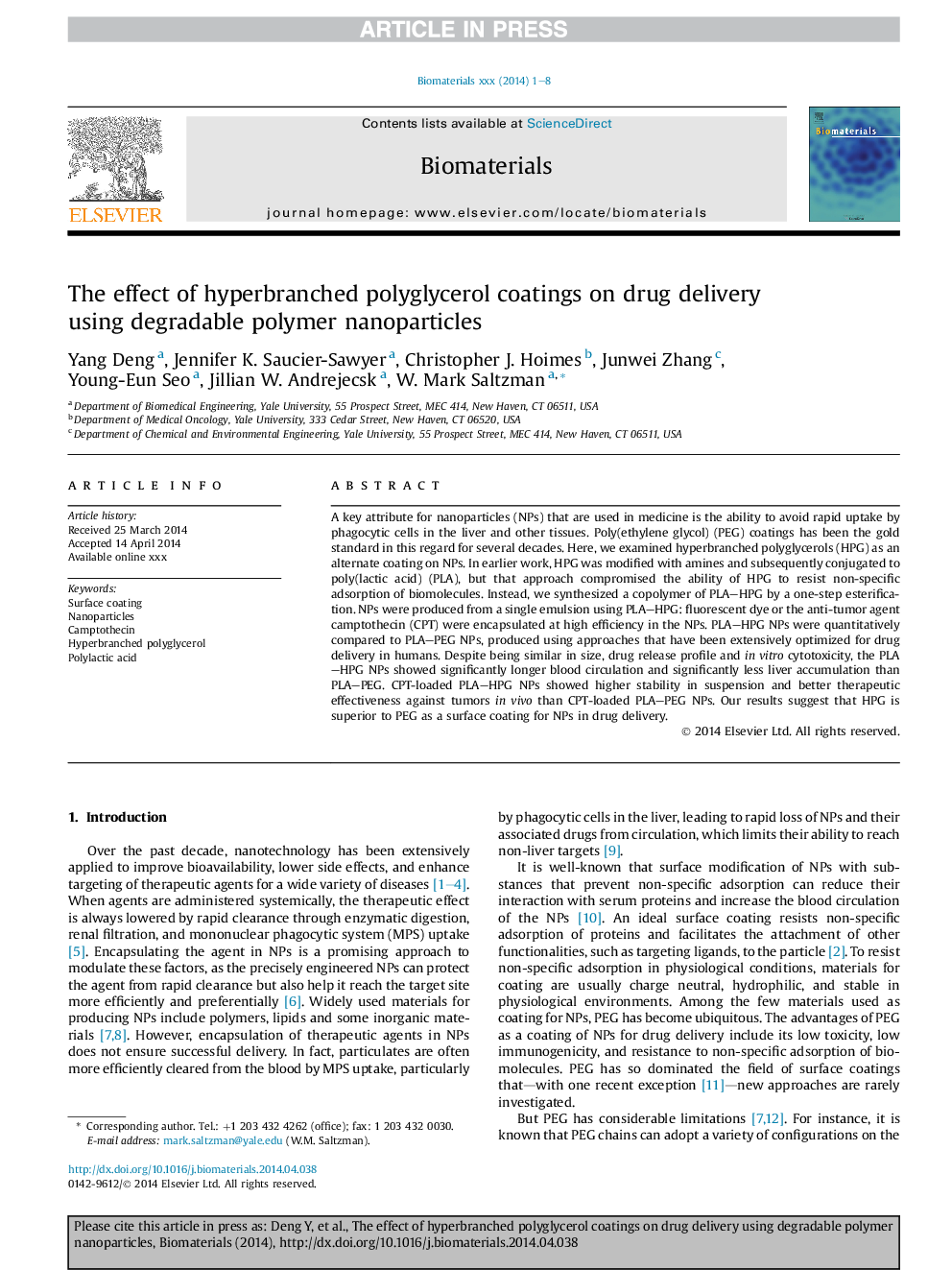| کد مقاله | کد نشریه | سال انتشار | مقاله انگلیسی | نسخه تمام متن |
|---|---|---|---|---|
| 10227668 | 451 | 2014 | 8 صفحه PDF | دانلود رایگان |
عنوان انگلیسی مقاله ISI
The effect of hyperbranched polyglycerol coatings on drug delivery using degradable polymer nanoparticles
ترجمه فارسی عنوان
اثر پوشش های پلی گلیسرول پرانتز بر تحویل دارو با استفاده از نانوذرات پلیمری قابل تجزیه
دانلود مقاله + سفارش ترجمه
دانلود مقاله ISI انگلیسی
رایگان برای ایرانیان
کلمات کلیدی
موضوعات مرتبط
مهندسی و علوم پایه
مهندسی شیمی
بیو مهندسی (مهندسی زیستی)
چکیده انگلیسی
A key attribute for nanoparticles (NPs) that are used in medicine is the ability to avoid rapid uptake by phagocytic cells in the liver and other tissues. Poly(ethylene glycol) (PEG) coatings has been the gold standard in this regard for several decades. Here, we examined hyperbranched polyglycerols (HPG) as an alternate coating on NPs. In earlier work, HPG was modified with amines and subsequently conjugated to poly(lactic acid) (PLA), but that approach compromised the ability of HPG to resist non-specific adsorption of biomolecules. Instead, we synthesized a copolymer of PLA-HPG by a one-step esterification. NPs were produced from a single emulsion using PLA-HPG: fluorescent dye or the anti-tumor agent camptothecin (CPT) were encapsulated at high efficiency in the NPs. PLA-HPG NPs were quantitatively compared to PLA-PEG NPs, produced using approaches that have been extensively optimized for drug delivery in humans. Despite being similar in size, drug release profile and in vitro cytotoxicity, the PLA-HPG NPs showed significantly longer blood circulation and significantly less liver accumulation than PLA-PEG. CPT-loaded PLA-HPG NPs showed higher stability in suspension and better therapeutic effectiveness against tumors in vivo than CPT-loaded PLA-PEG NPs. Our results suggest that HPG is superior to PEG as a surface coating for NPs in drug delivery.
ناشر
Database: Elsevier - ScienceDirect (ساینس دایرکت)
Journal: Biomaterials - Volume 35, Issue 24, August 2014, Pages 6595-6602
Journal: Biomaterials - Volume 35, Issue 24, August 2014, Pages 6595-6602
نویسندگان
Yang Deng, Jennifer K. Saucier-Sawyer, Christopher J. Hoimes, Junwei Zhang, Young-Eun Seo, Jillian W. Andrejecsk, W. Mark Saltzman,
